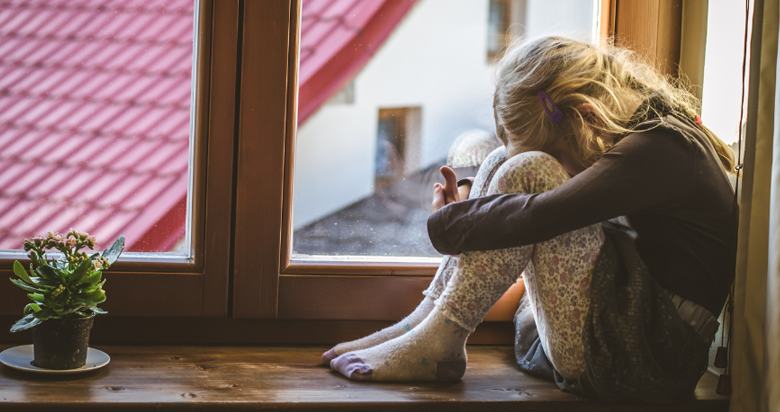Seasonal Depression in Kids

Seasonal Depression in Kids
Wintertime can be brutal for some people, and that includes kids. The cold temperatures and gloomy skies can make anyone feel lethargic, but some actually have a strong biological response to the weather. Seasonal depression, or Seasonal Affective Disorder (SAD) as it’s officially known, may be turning your otherwise happy child into one who’s downcast and depressed. Here’s what you need to know about seasonal depression and what you can do to help your child through it if they are suffering.
What Is Seasonal Depression?
Someone with seasonal depression exhibits similar symptoms to someone with regular-occurring depression, which can include:
- Feeling listless or sad most of the day, nearly every day.
- Losing interest in activities they normally enjoy.
- Having low energy, sleeping too much, and finding it difficult to concentrate.
- Feeling hopeless, worthless, or guilty.
- Changes in eating, especially cravings for simple carbohydrates.
- For toddlers: Being especially irritable and throwing tantrums.
So what exactly is going on in your child’s body that’s making them seasonally depressed?
The experts at Mayo Clinic list a few things that could contribute.
- Lack of sunlight – People are a bit more like plants than we realize! When we don’t get enough sunlight, it can disrupt our internal clocks in a way that can seriously throw off our brain chemistry. In fact, people living farther from the equator are more likely to suffer from SAD.
- Decreased serotonin – Serotonin is a brain chemical that influences a person’s mood. Reduced sunlight can cause serotonin levels to plummet, which can trigger depression.
- Increased melatonin – On the flip side, darker days can lead to increased levels of melatonin in a person’s body. Your body is naturally triggered to make melatonin when it gets dark. It helps you fall and stay asleep. So increased levels of melatonin can make a person feel lethargic and sleepy.
How Is SAD Different From Being Sad?
When it comes to mental health, it’s very easy to be dismissive. “Oh it’s fine, I’ll get over it,” is an all-too-common response to problems involving mental and emotional health.
The experts at Nemour KidsHealth put it perfectly: “When symptoms of SAD first start, parents might think that a lack of motivation, energy, and interest are due to a poor attitude. Learning about SAD can help them understand another possible reason for the changes, easing feelings of blame or impatience with their child or teen.”
Here are some things to help you differentiate between a seasonal issue, a temporary mood, or a long-lasting concern.
- Your child exhibiting one or two symptoms listed above does not indicate they are suffering from SAD. (Who doesn’t have the occasional craving for carbs?)
- The “most of the day, nearly every day” mentioned earlier is really important to keep in mind when it comes to SAD and depression. We all have days where we feel listless or sad. Don’t start becoming concerned about your child unless those days become the standard mood.
- SAD only occurs in the late fall and winter months. If you notice your child’s mood changing during that time but rebounding once there is more daylight, there’s a stronger possibility that the depression they experience is seasonal.
- Biologically, nonseasonal depression can be happening for the same reasons as SAD (melatonin vs serotonin). However, it can be caused by lots of different, more serious factors and not just the weather. Take a closer look at the things that may be depressing your child that extend beyond the weather. If there’s nothing else you can discover, their depression could be seasonal.
- Don’t be dismissive of your child and declare they’re just “down for no reason.” Talk to your pediatrician or family counselor if you think your child is suffering from SAD.
- According to Cleveland Clinic, depression is typically diagnosed if symptoms last two weeks or longer. Keep that in mind as you talk to doctors. They may want to reevaluate your child’s mental health during the summer months.
How You Can Help
Seasonal depression can be difficult to pinpoint. Your mind isn’t thinking to connect the time of year with your child’s mood. And there’s understandable reluctance to diagnosing your child with something as serious as depression (seasonal or not).
Regardless, talk to your doctor. They can help you get to the bottom of your child’s struggle and find ways to address it.
Here are a few things they may ask you to try.
- Light therapy & vitamin D – Since so much of SAD can be traced back to sunlight, the best way doctors have found to combat it is through light therapy. Getting outside when it’s sunny for 20 to 60 minutes is a great way to start. If you live in a dependably cloudy part of the world, there are special lightboxes you can purchase. Using it for 20 to 60 minutes every morning should help. And while it hasn’t been proven to help SAD on its own, doctors often suggest adding a vitamin D supplement to the diets of people suffering from SAD.
- Counseling/therapy – There is no shame in seeking the help of a mental health professional. Your state’s department of mental health and community health services often provide affordable mental health services to children and families dealing with depression. There are lots of affordable private practices to choose from, as well.
- Medication – If your doctor thinks your child is suffering severely from SAD, they may prescribe medication. These medications do have side effects, so make sure to have a serious conversation with your doctor about the potential risks.
Hopefully, with a little knowledge and better understanding, the seasonal depression your child could be experiencing will be minimal and manageable. The main thing to remember is that you’re not alone and (if your child does suffer from SAD) there’s nothing to be ashamed of or secretive about. Talk with teachers and trusted adults about how the winter months affect your child so they can extend the same support and understanding your child gets at home. Because one of the best things you can do for a child struggling with depression is making sure they know they are loved.





